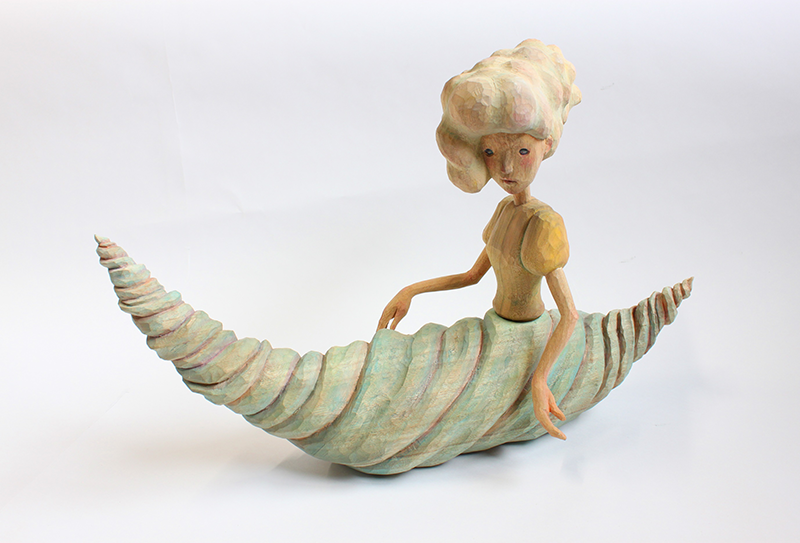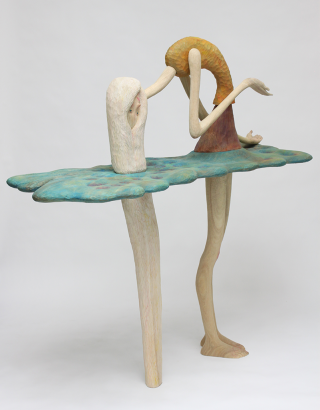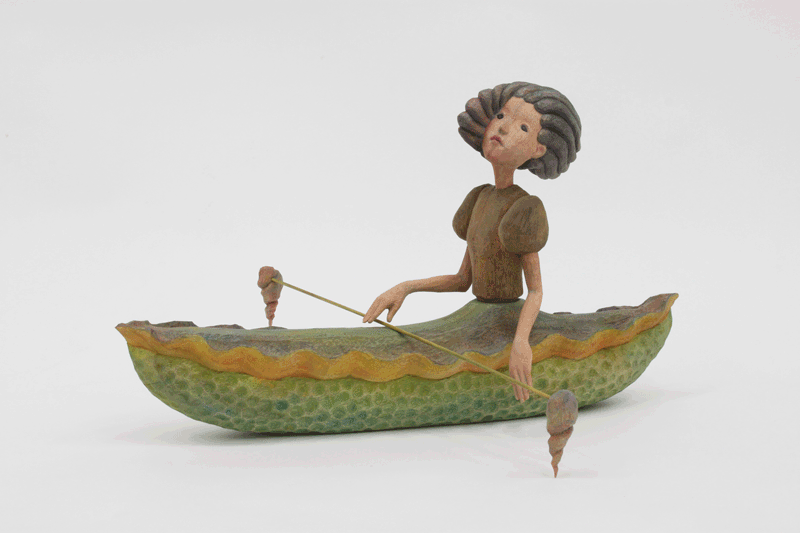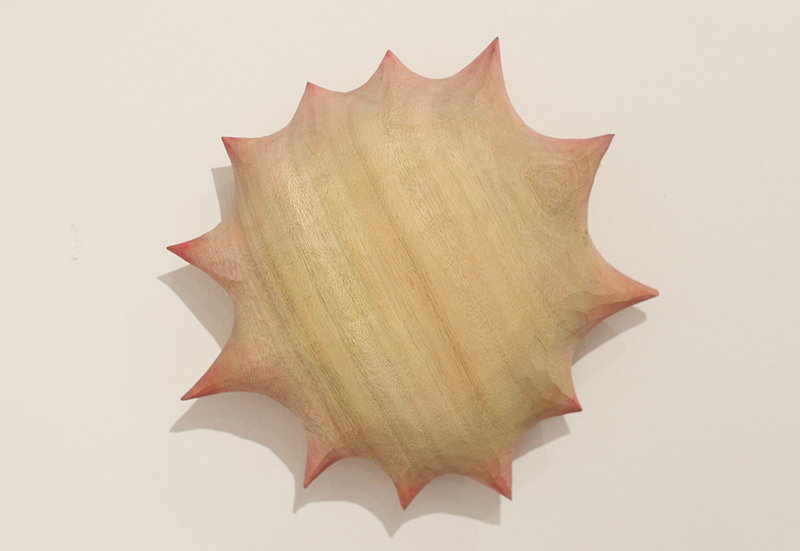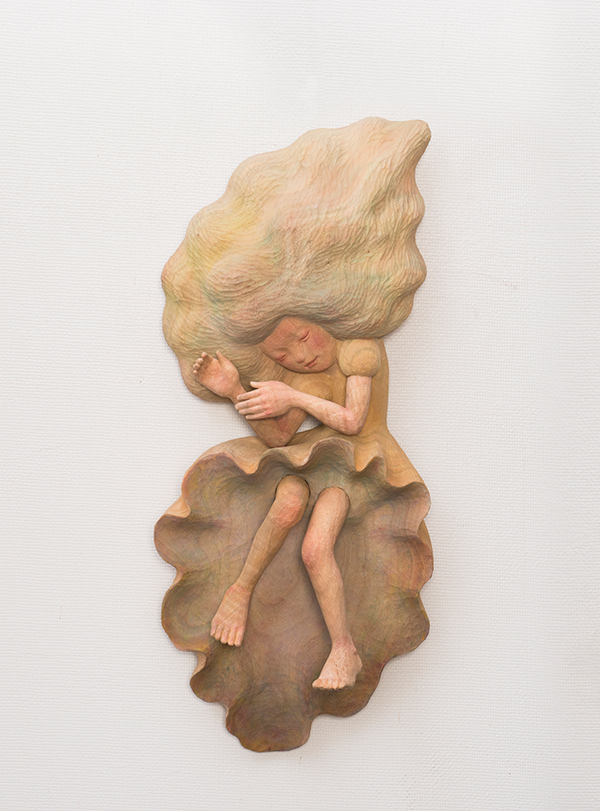The first thing you see when you walk into Sato Haguri’s exhibition at Nanatasu Gallery is the incredibly tall figure of a slim woman bending backwards, her whitish-blond hair cascading down to the ground. She breaks the surface of the water just below the line of her skirt and with her long tresses, which fit into one of the circular holes in the surface. It’s a fluid piece, both in its aquatic theme and in the flowing lines of the sculpture itself.
Called “Itsumono Hi,” it’s a stark remove from a piece that stands, closed off, in one of the side rooms – a ballerina, represented in perfect realism, with firm, fine lines and very little added color. As the young woman from Aichi Prefecture explains, it was a piece that she created while she was in school, and while the technique that brought it to life may have been admirable, Haguri didn’t see that kind of work as a proper representation of her personal vision. “At that point, I didn’t even think about creating pieces that went the way I wanted them to look. I thought that if something looked realistic, that was the only thing that really mattered!”
“But I felt like continuing to make pieces like that was becoming more and more difficult for me to do, so gradually I started to make pieces that I was interested in seeing, pieces that looked like something out of an illustration.”
It was after graduating from Aichi Prefectural University of Fine Arts and Music that her creative imagination could take flight, or – in the case of Haguri, who developed an interest in scuba during university – dive deep. “The feeling that I want to communicate in my work is like you’re underwater, floating, and surrounded by these undersea creatures.”
Going along with an interest in recreating these inhabitants of the natural world, Haguri is attracted by the opportunity of exploring certain forms. As large as “Itsumono Hi” is, it grew out of the artist’s desire to explore a particular shape – one of the circular holes on the surface of the “water” – and to imagine how the human form could fit with that shape.
Many of Haguri’s more complex pieces are made using a technique called yosegi, a wood-joining technique that is often used to make mosaics, but in this case is used to make more complicated forms. While she is still a young artist, this vision has certainly gotten attention: she won the Toshiyuki Inoko Award at Geisai #20 in 2014, and the Tokyo Design Week 2015’s Asia Awards Art Division Semi-Grand Prix.
(You can see a clip of Haguri that was created for the Geisai show below.)
Haguri’s figures might inspire curiosity from audiences, but Haguri is not overly worried about trying to tell a particular story with her pieces. “I’m not trying to think about what the figures are thinking. For me, the most important thing is placing the figures in the location and then going from there.”
Sato Haguri’s show at Nanatasu Gallery will run until May 29. For more information, visit our event calendar or the gallery website.

